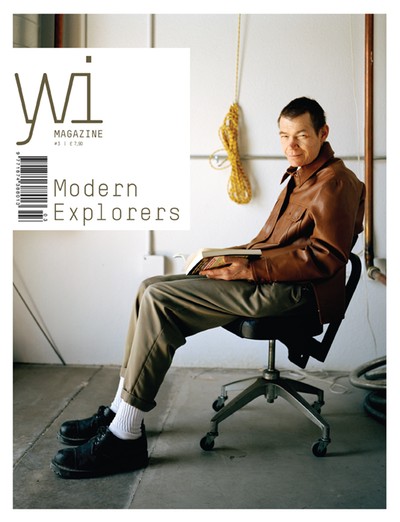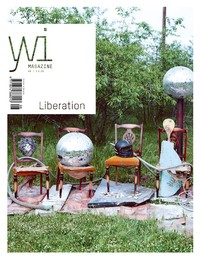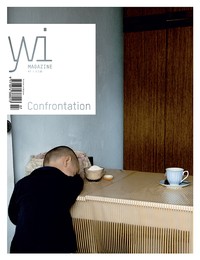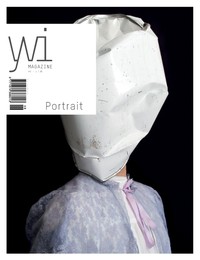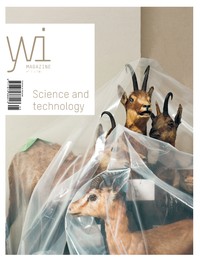Yvi Magazine i — #3
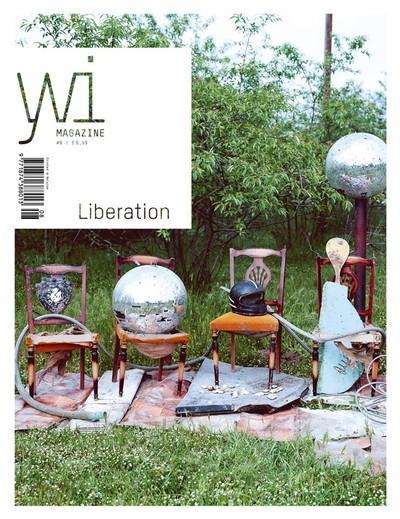
Yvi Magazine
Yvi Magazine is an English-language art magazine published in the Netherlands. Each issue of Yvi Magazine focuses on a central (social) theme seen from the perspective of art. A wide range of artistic visions on a pertinent social theme are brought together in the form of photography, design, architecture and visual art.
- 435 (128)
- Netherlands
- Yearly
- Art, Culture, Design, Photography & Video
- First issue 2007
- ISSN 1874-3889
“#3: Modern Explorers”
EUR 12.50
The theme of this third issue of Yvi Magazine is Modern Explorers. Now that the world seems to becoming ever smaller, thanks to contemporary media and communications tools, it seems as if we increasingly know everything that is going on in the world. If something is happening somewhere, within minutes, the facts and the pictures are on the web and on television. Almost everywhere in the world has been visited at least once and human experiences and processes have already been discussed and charted. This raises the question of whether, along with newsworthy events, there is anything left for the upcoming generation to discover. Ah, but there is! While investigating suitable material for this theme, I was surprised by the great number of artists who are discovering, documenting and making accessible to others things that range from very personal to very worldly, by way of photography, film, painting and other media. In this issue of Yvi Magazine, you will find a selection that to my mind, is more than worth the while of discovering for ourselves. J.H. Engstrom and Kurt Tong look back at memories of their youth. After many years, J.H. Engstrom returned to the site of his first experience outside of his native Sweden, as a 10-year-old boy: the Charles de Gaulle Airport outside Paris. Kurt Tong, using old photographs from his childhood, returned to the national parks in China that he had once visited with his parents. Judith Jockel went behind the walls of a women’s prison, where the young children of the detainees also live. Paho Mann has discovered the contents of the small, personal territories that usually remain closed to others, hidden in kitchen drawers. Pawel Jaszczuk reveals the typically Japanese phenomena of the socially excepted drunkenness of the Salaryman. Rob Hornstra produced a documentary about life in Cement Town, an old suburban neighbourhood of the industrial Siberian city of Angarsk, known as a ‘no-go area’, crime-ridden and dangerous. The fact that some people do not accept the temporary character of life is shown by Murray Ballard in his series on the adherents of Cryonics, a group that hopes to restore their deceased and frozen members to life through (future) technology. Christina Seeley charts the Earth’s brightest places in Lux, a series of brilliant night photographs of major cities in America, Europe and Japan. Naomi Leibowitz investigates the empty interiors of the cubicles where passport photographs are taken, placing them in a different reality. Joost Conijn took a trip through Eastern Europe with a wooden car that he built himself and which runs on wood, embarking on an undefined route towards the unknown. Ben Thomas literally and figuratively plays with the perspective of familiar cities and situations in his series, City Shrinker, blurring the boundary between real and fake. Filip Berendt creates portraits of people without their being present, constructing personalities through objects in their homes. Finally, Trevor Paglen followed and photographed the 189 secret American satellites that circle the globe and, by way of complex calculations by software he designed himself, created stunning images of their trajectories, which are interesting as images and at the same time raise questions about the political and societal consequences of the presence of these satellites.
What do you think of this issue?
Sign up or Log in to join the discussion.
Recent activity
- 12 Dec, 2014 Added to pile by Pfrsch
- 09 Feb, 2014 Wanted by TanekeyaWord
- 26 Jan, 2014 Wanted by MaverickPT
- 22 Oct, 2013 New cover uploaded by jschiphorst
- 22 Oct, 2013 Added to Magpile by jschiphorst
